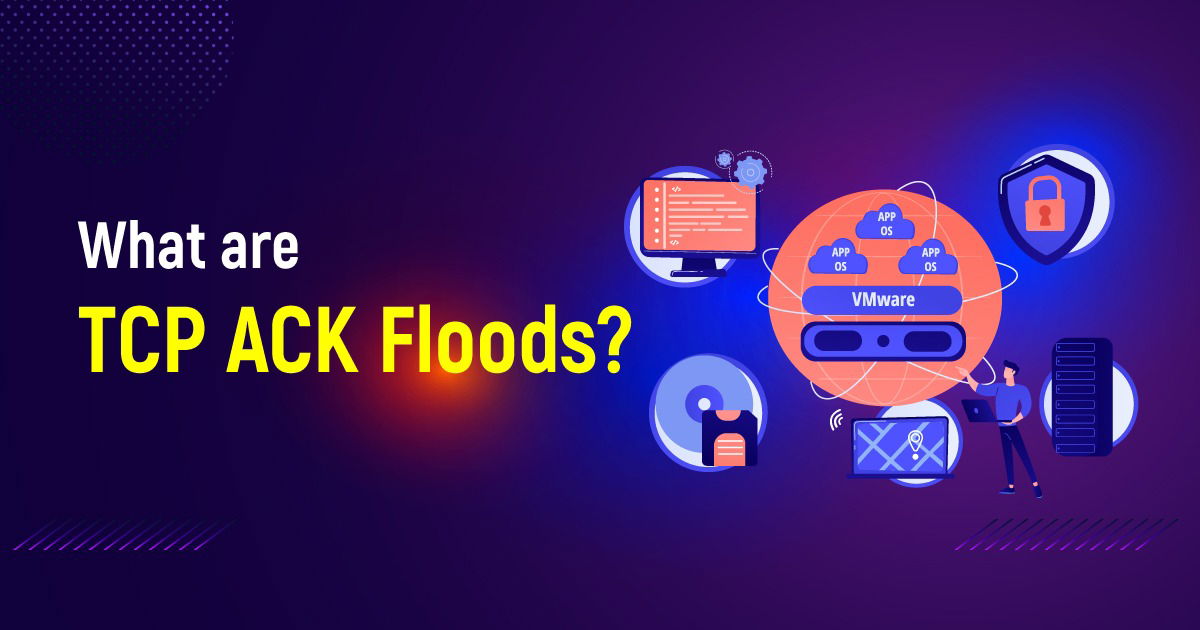TCP ACK Floods involve overwhelming a target network by inundating it with a barrage of TCP acknowledgement (ACK) packets. By exploiting the TCP three-way handshake process, attackers flood the target with an excessive number of ACK packets, consuming network resources and impeding normal communication.
How Do TCP ACK Floods Work?
TCP ACK Floods exploit the nature of the TCP protocol, specifically the acknowledgement mechanism used to establish and maintain a connection. Attackers send a massive volume of forged ACK packets to the target network, overwhelming its capacity to process and respond to these packets. This flood of ACK packets saturates network resources, resulting in service degradation or complete unavailability.
Impacts of TCP ACK Floods
Network Congestion and Performance Degradation:
TCP ACK Floods lead to network congestion as the flood of ACK packets consumes available bandwidth and exhausts network resources. This congestion results in degraded network performance, including increased latency, slow response times, and disrupted communication.
Disruption of Connection Establishment:
By overwhelming the target network with forged ACK packets, TCP ACK Floods hinder the establishment of new connections. Legitimate connection requests may be delayed or denied, preventing users from accessing network services or causing significant delays in establishing connections.
Exhaustion of Network Resources:
The continuous influx of ACK packets consumes network resources, including CPU, memory, and network buffers. As these resources become overwhelmed, network devices may become unresponsive, resulting in service disruptions and potentially leading to complete network downtime.
Mitigating TCP ACK Floods

Traffic Filtering and Rate Limiting:
Implement traffic filtering mechanisms and rate limiting measures to identify and mitigate TCP ACK Floods. These techniques involve setting thresholds for the number of ACK packets allowed from a single source within a specific time frame, effectively controlling the flood of packets and preserving network resources.
Deep Packet Inspection:
Utilize deep packet inspection techniques to analyze network traffic and identify patterns associated with TCP ACK Floods. By examining packet headers and payloads, suspicious ACK packets can be detected and blocked, preventing them from overwhelming network resources.
Intrusion Detection and Prevention Systems (IDPS):
Deploy robust IDPS solutions equipped with anomaly detection capabilities to identify and mitigate TCP ACK Floods. These systems monitor network traffic, analyze ACK packet patterns, and apply countermeasures to block malicious ACK packets and protect network resources.
Network Capacity Planning and Redundancy:
Properly plan network capacity and establish redundancy mechanisms to withstand TCP ACK Floods. This involves ensuring sufficient bandwidth, network device scalability, and implementing failover mechanisms to distribute the load and maintain network availability during an attack.
Conclusion
TCP ACK Floods pose a significant threat to network communication, disrupting operations and impeding the establishment of connections. By understanding the nature of TCP ACK Floods and implementing robust mitigation strategies, organizations can effectively defend against these attacks. Traffic filtering, rate limiting, deep packet inspection, intrusion detection systems, network capacity planning, and regular security updates are vital components in preserving the integrity and availability of network communication. Stay vigilant, stay prepared, and safeguard your network communication against the assault of TCP ACK Floods.












